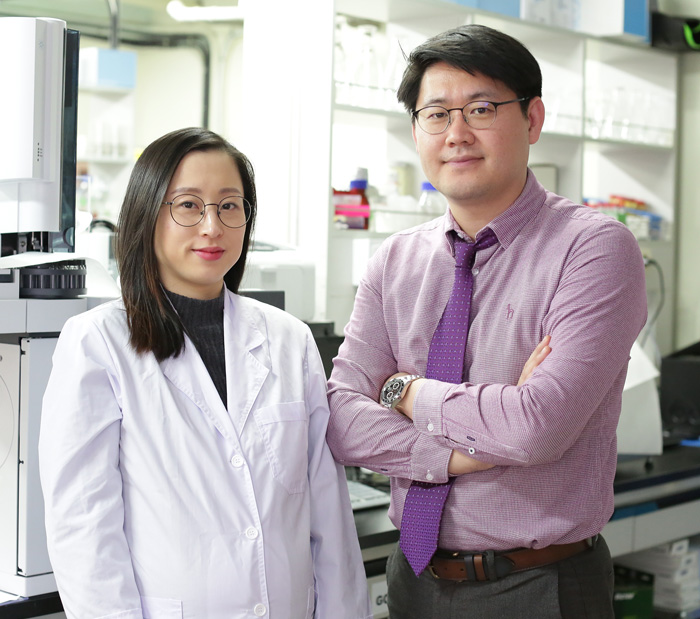Research Stories
Photosynthetic Production of α-farnesene from CO2 by Profs. Han Min WOO & Hyun Jeong LEE
Solar-to-chemical and solar-to-fuel production from CO2 have been developed using engineered microorganisms that assimilate CO2 and convert target chemicals and fuels using solar energy.
Food Science and Biotechnology
Prof.
WOO, HAN MIN
Solar-to-chemical and solar-to-fuel production from CO2 have been developed using engineered microorganisms that assimilate CO2 and convert target chemicals and fuels using solar energy. In addition to integrated bio-electrochemical systems, photosynthetic cyanobacteria have been metabolically engineered to redirect CO2 to value-added chemicals as bio-solar cell factories. The research team of Profs. Han Min WOO and Hyun Jeong LEE reported the metabolic engineering of unicellular Synechococcus elongatus PCC 7942 to improve the photosynthetic production of α-farnesene from CO2 in the Journal of Agricultural and Food Chemistry, December 6, 2017.
As a result of the lack of farnesene synthase (FS) activity in the wild-type cyanobacterium, the research team metabolically engineered S. elongatus PCC 7942 to express heterologous FS from apple fruit, resulting in detectable peaks of α-farnesene. To enhance α-farnesene production, an optimized methylerythritol phosphate (MEP) pathway was introduced in the farnesene-producing strain to supply farnesyl diphosphate. Subsequent cyanobacterial culture with a dodecane overlay resulted in photosynthetic production of α-farnesene from CO2. Prof. WOO said that to the best of our knowledge, this is the first report of photosynthetic production of α-farnesene from CO2 in the unicellular cyanobacterium S. elongatus PCC 7942. This engineered strain could be further optimized to accelerate the development of bio-solar cell factories to convert CO2 to α-farnesene as a value-added bioproduct (fragrance, surfactants, etc.) or α-farnesane, a potential bio-jet fuel.
This work was supported by the Korea Carbon Capture & Sequestration R&D Center (KCRC, 2017M1A8A1072034) and the Basic Science Research Program (2017R1A2B2002566 and 2017R1A6A3A01011460) through the National Research Foundation of Korea, funded by the Korean Government [Ministry of Science and Information and Communications Technology (ICT)].
The full article can be accessed at http://pubs.acs.org/doi/full/10.1021/acs.jafc.7b03625.

